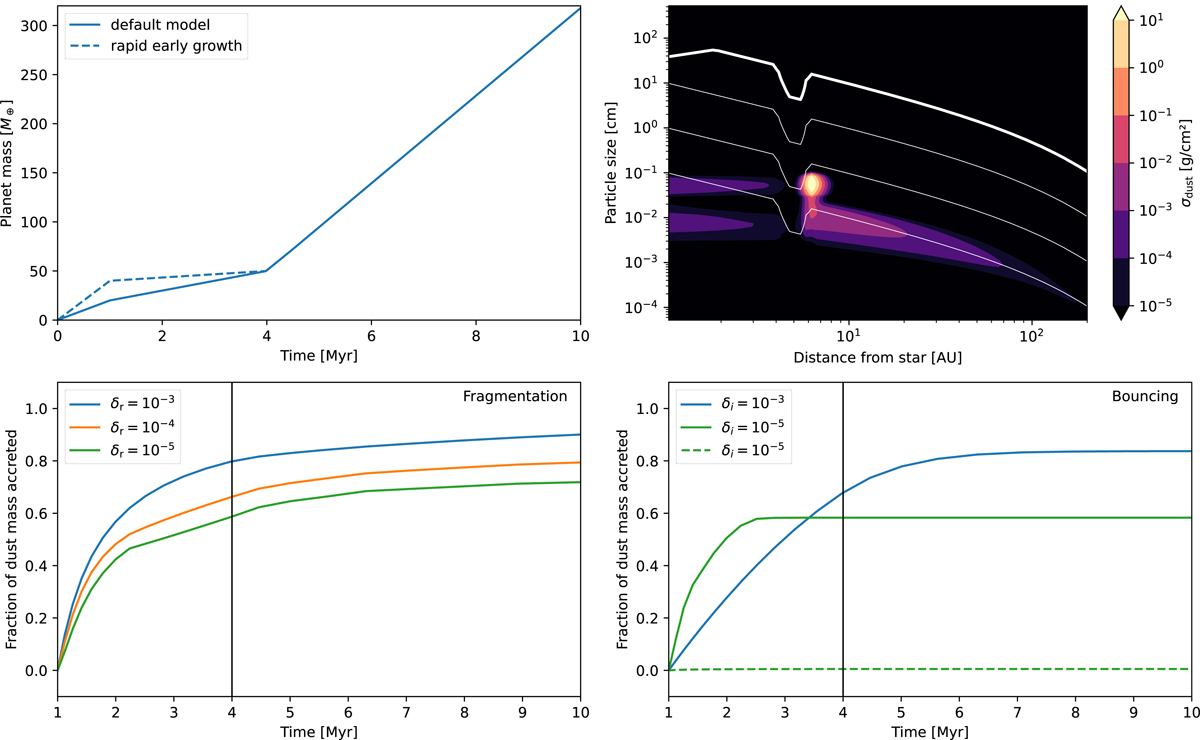Fig. 4.

Download original image
Comparison of models with fragmentation and bouncing with variable planet masses. Top left: evolution of the planetary mass in the time-dependent model. The solid line shows the default model where the planet reaches 20 M⊕ at 1 Myr. The dashed line shows the evolution in a model with rapid early growth in which the planet reaches 40 M⊕ at 1 Myr. Bottom left: fraction of outer disk dust mass accreted through the gap after 1 Myr in the default planetary mass evolution model for different values of dust diffusivity δr with fragmentation limited growth. Bottom right: solid lines show the fraction of outer disk material accreted through the gap after 1 Myr for bouncing limited growth for different values of the δi parameters in the default planetary growth model. The dashed green line shows a model of bouncing limited growth with δi = 10−5 and rapid early growth of the planet (dashed line in top left panel). The vertical lines indicate 4 Myr until which the two reservoirs needed to be separated. Top right: snapshot of the dust distribution at 4 Myr for the model with bouncing limited growth and δi = 10−5 (dashed green line in bottom right panel). The inner disk is depleted in dust and only supplied with small amounts of outer disk material.
Current usage metrics show cumulative count of Article Views (full-text article views including HTML views, PDF and ePub downloads, according to the available data) and Abstracts Views on Vision4Press platform.
Data correspond to usage on the plateform after 2015. The current usage metrics is available 48-96 hours after online publication and is updated daily on week days.
Initial download of the metrics may take a while.


